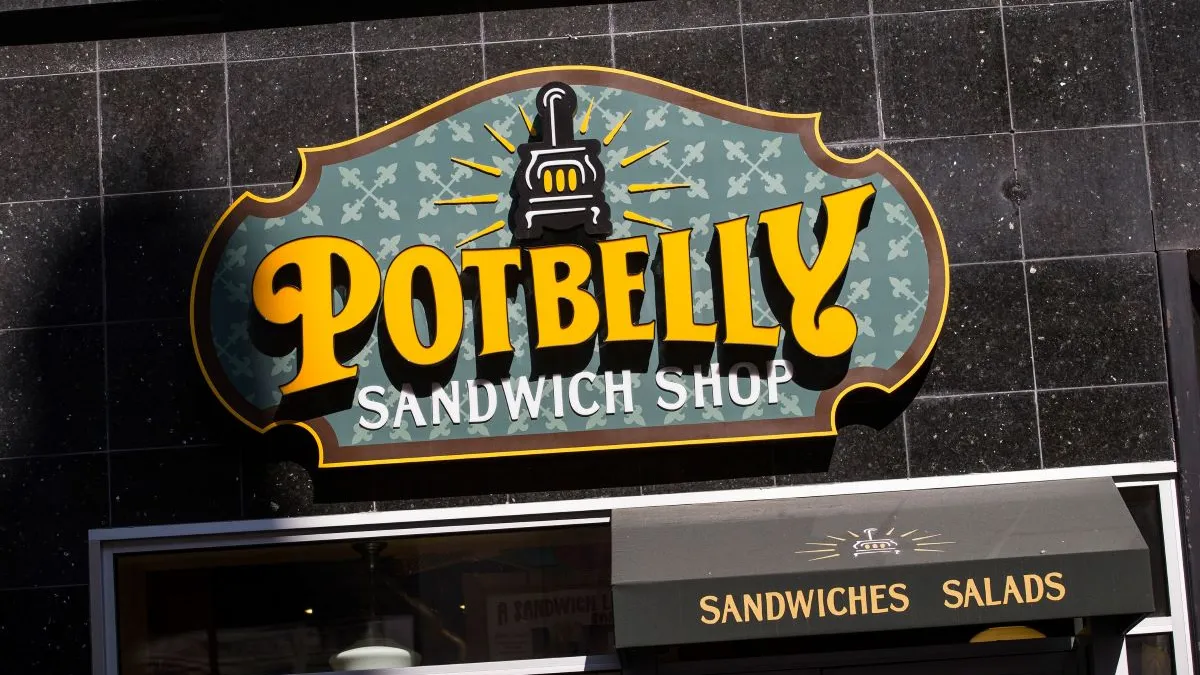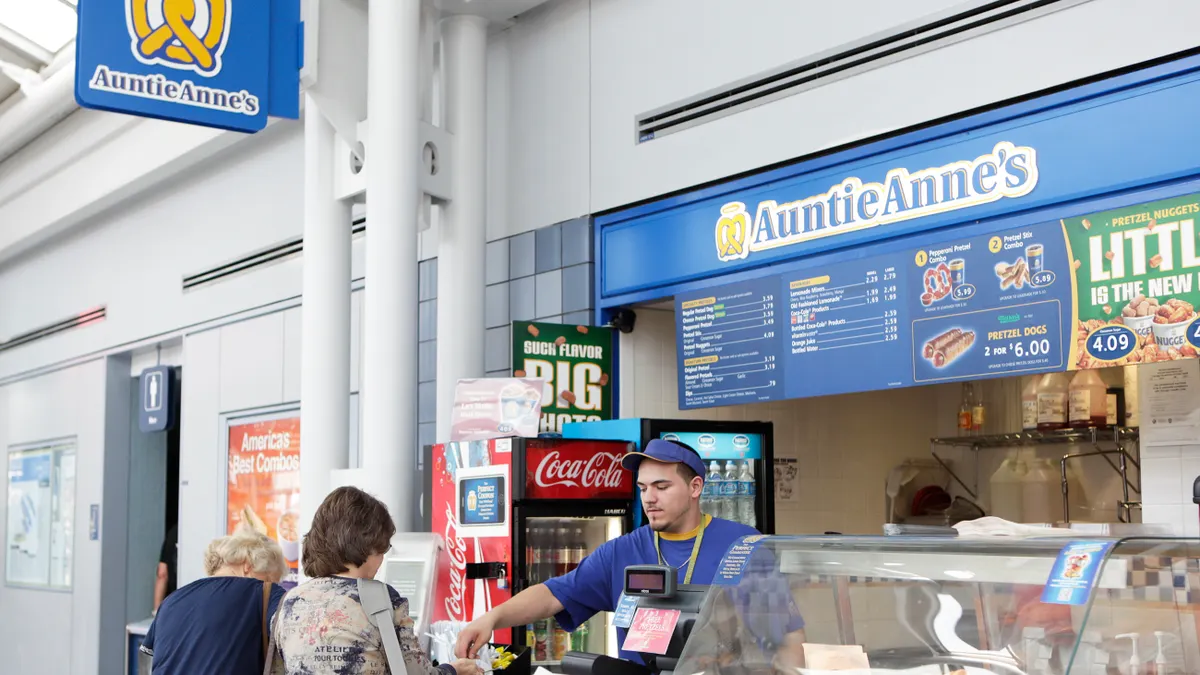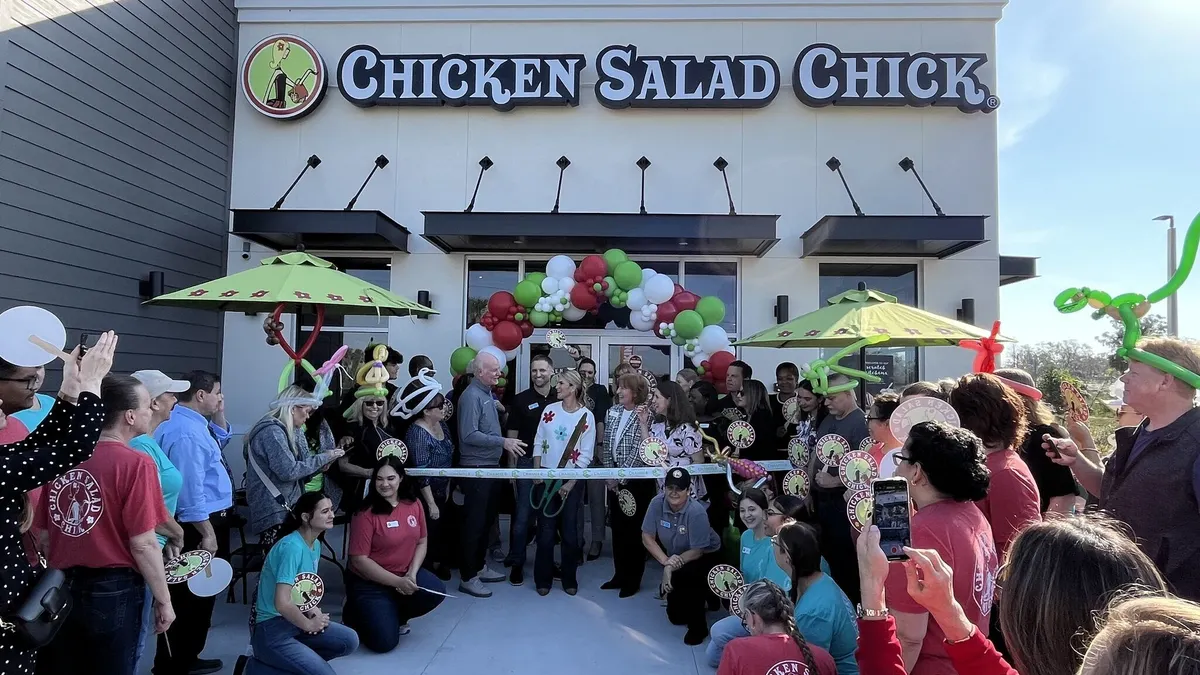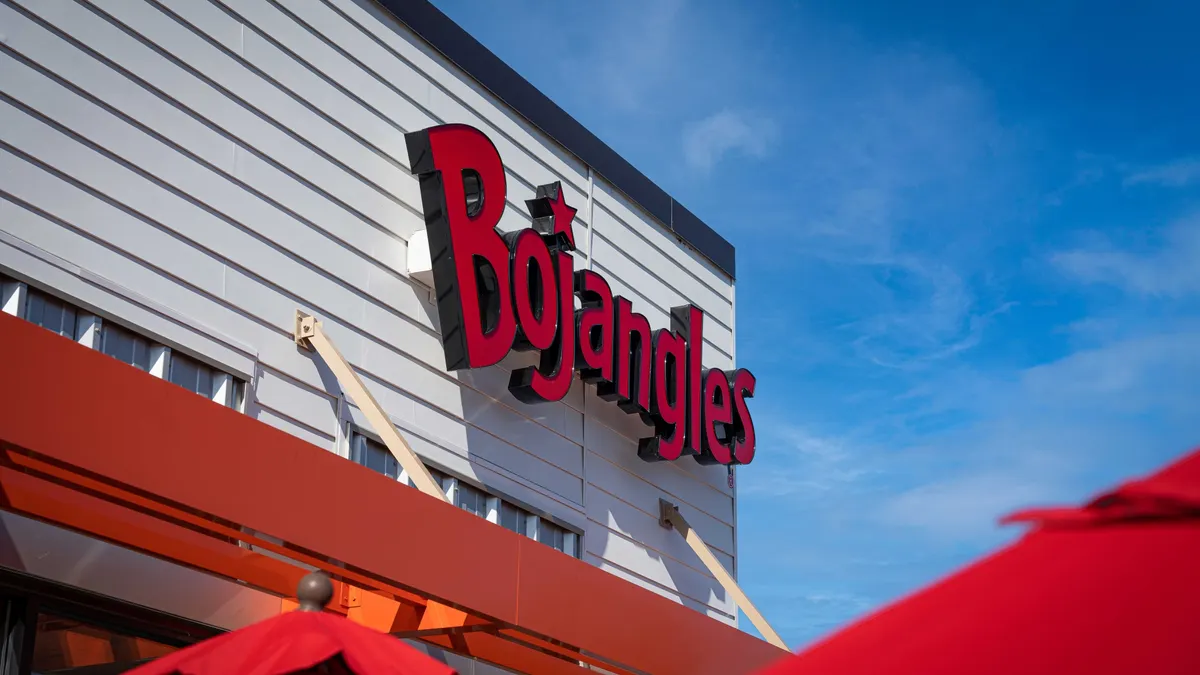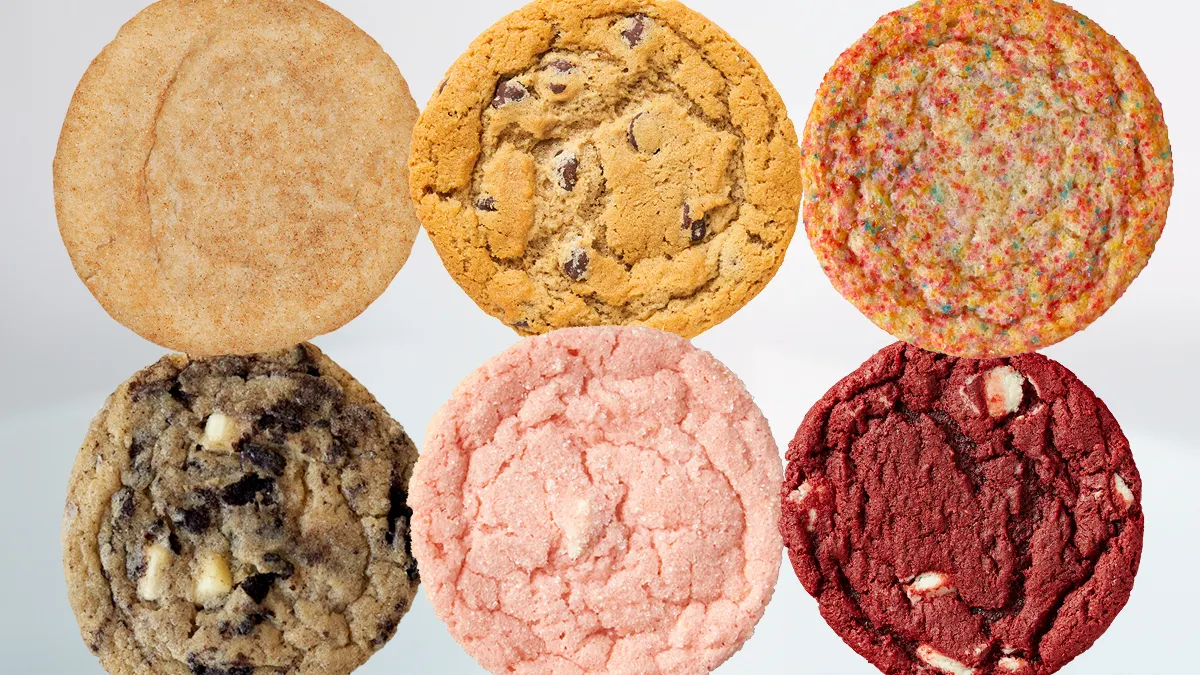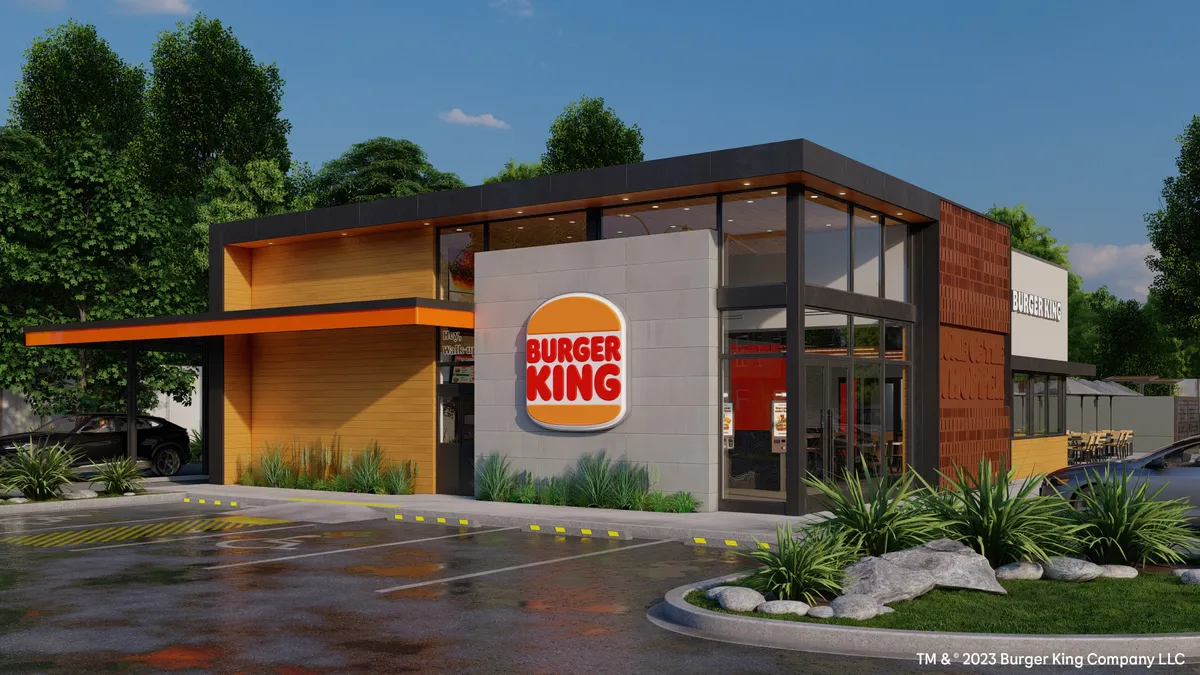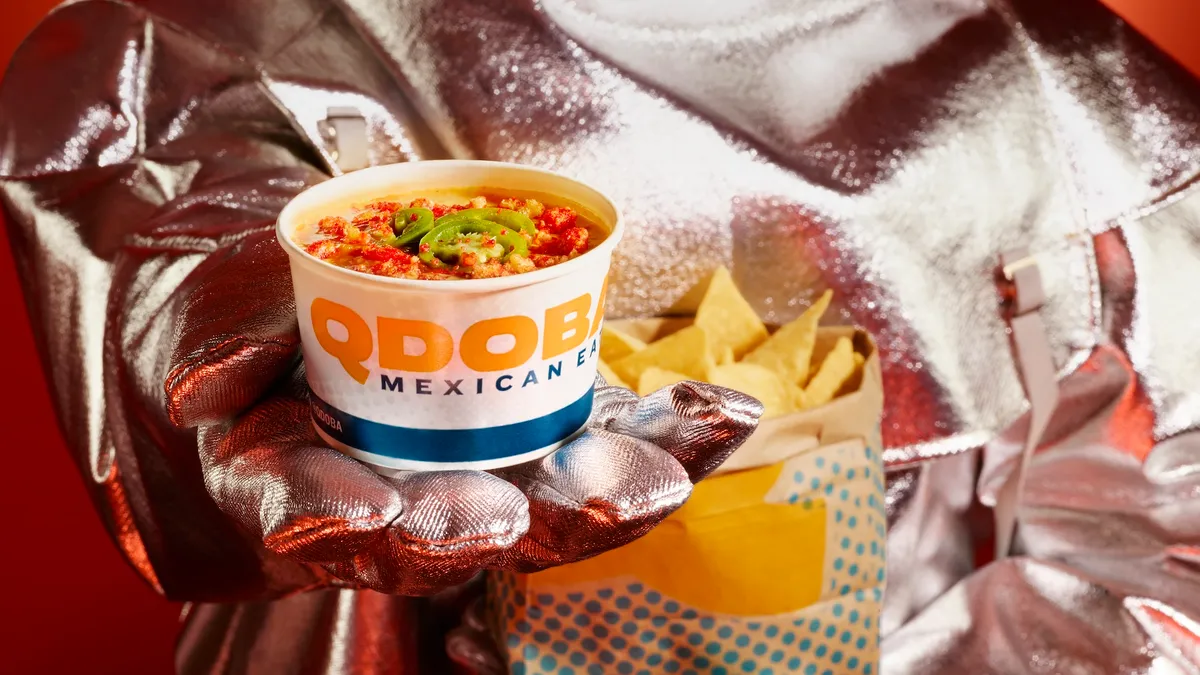Potbelly is looking to grow its reach across the U.S. The fast casual chain currently operates in 33 states, but has distribution capacity to reach even more of the country, CEO Bob Wright said. To scale its footprint, Potbelly is leaning on new franchise growth to bulk up its presence in underpenetrated markets, such as the broader Southeast, while also refranchising existing units.
“We're willing to sell or refranchise approximately 25% of our company's fleet,” Wright said.
The company hopes to entice operators big and small with its Potbelly Digital Kitchen, or PDK, model, which all new builds will include. This format’s digitized backline helps process orders placed online more efficiently, improving order accuracy and freeing up employees for other tasks, Wright said.
Restaurant Dive spoke with Wright about how Potbelly’s digitally-enabled kitchen overhaul is performing with employees and customers, how it’s approaching franchise growth and the near-term challenges the chain is anticipating.
Editor’s note: This interview has been edited for clarity and brevity.
RESTAURANT DIVE: Potbelly is working toward a 2,000-unit goal over the next few years — how many new restaurants opening in H2 and 2024 will be franchised?
BOB WRIGHT: Our Franchise Growth Acceleration Initiative has two parts. The first part includes this strong pivot toward almost exclusively growing through franchise development. We've taken every one of the designated market areas in the country and studied what its market holding capacity is, divided many of those DMAs into SDAs, or Shop Development Areas — pre-packaged, multi-unit territories that we believe are the right size for franchisees to acquire through their development agreements. And it's those development agreements that will yield the growth in the future.

The second part of the Franchise Growth Acceleration Initiative is that we're willing to sell or refranchise approximately 25% of our company's fleet. At the time of this announcement last year, we had approximately 400 units, so about 100 locations that we would sell. Unlike a lot of companies that are refranchising for the purpose of just transitioning out of that direct earnings model into a franchise model, for us it’s a catalyst for growth. We’ve done the work and we know we should have 20 units or more in a market where we only have four. We know we're not going to be the ones to deploy the capital needed for developing that market, franchisees are going to do that. So franchisees are going to want to own those four restaurants because it rounds out their ownership in the entire market, plus it gives them a base of operation as they begin to develop.
As you refranchise locations, how do you select which restaurants are good candidates for this conversion?
We've announced two refranchising deals already this year. One was in New York and one was in Maryland. We're very excited about both. We've got particular emotional affinity for the Maryland deal because our founder became a franchisee in that market. But our strategy is mostly about development. We’ve never announced the actual markets or shops that we’re willing to refranchise, but it would trend toward those that are in under-penetrated markets. We have quite a few markets where we are operating fewer than 25% of what we believe to be the potential in those markets. We’ll be very willing to let go of those shops if we can get a franchisee that wants to finish building.
Zooming out a bit to look at Potbelly’s overall franchising plans, what regions are you targeting?
One of the biggest barriers to growing restaurants through franchising is distribution of our food products. Because we already have such a wide footprint, we've got distribution capability across nearly all of the lower 48 states. And that means that we can open up our sales machine to the entire United States, except for a few pockets where we don't have distribution capability yet. Having said that, if you look at our penetration across the U.S., we're very light in the Southeast. And we have unfinished penetration in parts of the Midwest and in the Middle South.
Our new SVP of franchising, Lynette McKee, just came on board a few weeks ago. We further subdivided the franchising leadership responsibilities so Lynette oversees recruitment, franchisee selections, sales, the deal-making part of the franchising responsibility, for us. Lynette's desire is to further focus our regional efforts. Her first responsibility is recruitment so that we can be even more targeted.
What kind of operator are you targeting? Are you more interested in multi-unit franchisees, for example, compared to smaller operators with regional experience?
If we can craft a Shop Development Area out of a certain territory that makes sense for that franchise candidate, they can be smaller. They can operate two, three shops. It really depends on the capabilities of the franchise group that we're talking about.
Most franchise candidates gravitate toward what they know. So if you're in a rural part of Arkansas, that franchisee may only have capacity for five or six units and they say, “Hey, I don't really want to go beyond this territory because this is the sweet spot. This is where our business is. I've got real estate and construction connections in this area.” Signing up for five units is perfect for that group. The more sophisticated, multi-brand franchisees can take down much larger territories because they have the network and infrastructure to be able to do that. Our approach is customizable to fit the market and the best capabilities of a franchise candidate.
I know Potbelly’s Digital Kitchen platform will be present in all new franchised units going forward. How is this model impacting throughput, labor and other operations at Potbelly?
We’re very pleased with the results. Our franchisees were excited to know that we made it part of the standard technology package we open with all of our new locations, franchised or company-owned. Potbelly’s always been built with two production lines — one backline and one frontline. The frontline is where we serve all our customers that traditionally walk in the shop, which includes the load station where we start the sandwiches, the soup line, the dress station and everything else. There's a second line with all the same exact capabilities on the back wall. Originally those backlines were built to support catering, but through the pandemic, when we leaned harder into digital — we redid our app and our website, and our digital business has been growing.
Thirty-eight percent of our sales came through digital channels last quarter. On the backline, we found that we had some manual processes that were getting in the way of the best customer experience and, frankly, the best employee experience. Orders come in at different times, and used to be manually sorted so that food was made in the right order for the best customer experience. We've digitized all of that. Orders placed in advance are held and then delivered to the backline in the proper time and we get much higher accuracy and get food ready on time. Scores show hot food is hotter because it's prepared when it needs to be. The cold food is colder. Our associates love this process because it makes operating that line much, much easier.
Has this freed up employees?
We've taken an hour of labor out of the shop every day, which helps pay for the investment. We also have a couple of extra consumer-facing devices, such as our consumer-facing screen and our pickup shelf. So customers walk into a Potbelly Digital Kitchen shop and they can see their order and whether it's in process or it's ready, and they get confirmation that we've got their order, which a lot of people have some anxiety about. Their name is called when it's ready to go.
We also use what we call ILOT, or an inline order-taking tablet. On the front line, we use the ILOT to go deeper into the line and take the customer's order a little farther in advance and get their sandwich started so that we produce increased throughput on the front line. That's why PDK is being prioritized first at our highest-capacity locations for retrofit because we get all those benefits at the backline and we can unlock additional capacity on the frontline.
How does your digital mix break down across pickup and delivery?
This past quarter, our direct digital channels that are owned by third-party delivery companies continued to grow. Our digital catering continues to expand, as well.
The more we lean into providing additional advantages for consumers, like our loyalty program, the more they realize that starting in our digital environment is far better than starting in one of the third-party environments. But we're active in those third-party environments. And if you're not there, you're not gonna get that business.
Now that we’re looking toward the end of the year and start of 2024, what are some of the biggest near-term challenges and opportunities you are preparing for?
A couple years ago, we had some of the most difficult staffing environments that I've seen in my 30-plus years in the business. We're enjoying a much different environment today. Our shops are mostly fully staffed. We've had significantly lower turnover than we've had at the associate, shift lead, and general manager levels. And we're happy to see the inflation on both our food and packaging items, as well as our labor, really come back into line. It's still higher than it traditionally was before the pandemic, but is definitely leveling off and improving to be something that's a little more predictable for us next year.
We're excited about the growth that we have through our franchising efforts. There's still some uncertainty about what's going on in the economy. People have been talking about a recession for a very long time now and it continues to not come. So, we're watching the indicators of what may be changing in consumer behavior. Fast casual customers are higher income than what you find in QSR, and they seem to be quite resilient in their use of restaurants. We're stealing share in that area from our fast casual competitors. Our desire is to just keep that traffic growth moving.



